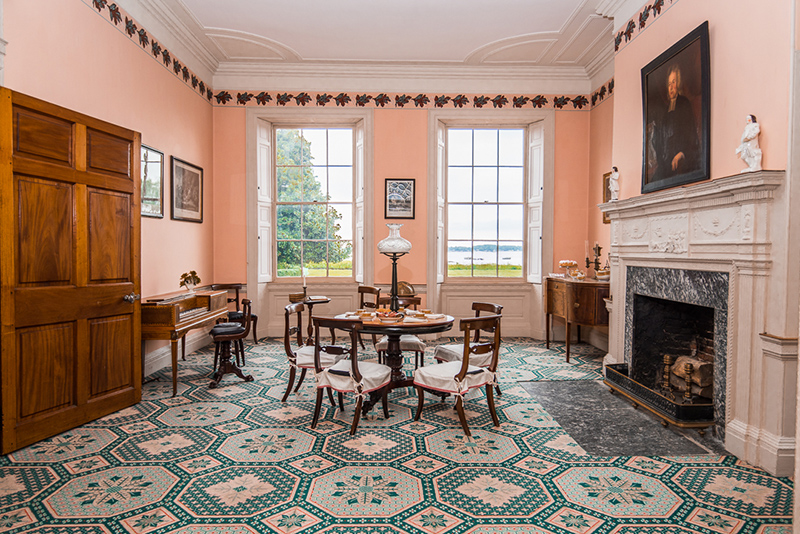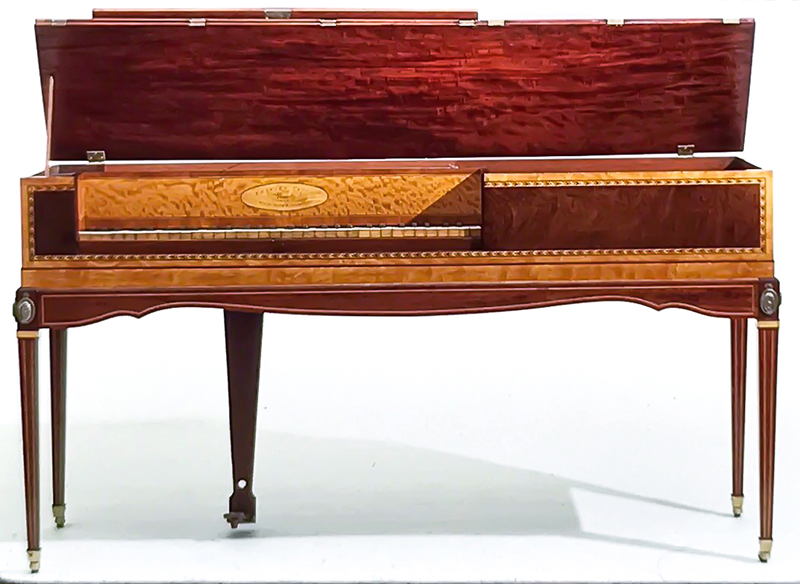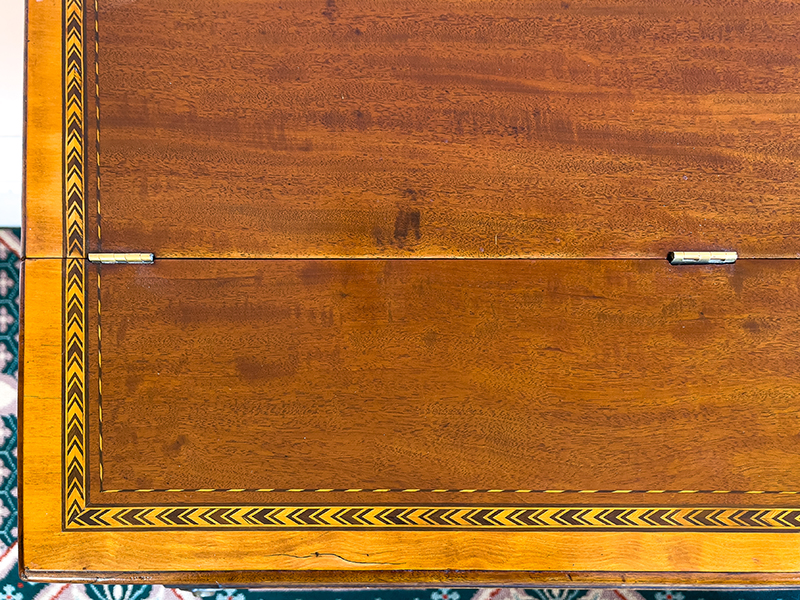A Square Piano in Time and Space
by Brenton Grom
George Read II was always stylish and rarely solvent. Documents from the construction of his circa-1800 mansion in New Castle, DE, show him in pursuit of Philadelphia’s best materials, artisans, and design vocabulary, which he often amplified to a point of profusion. He was notoriously slow to pay, and after he died in 1836, his furnishings and library were auctioned to satisfy creditors. But Read’s pomposity was posterity’s boon. The Read House survives as a National Historic Landmark not because his father was a signer of the Declaration and Constitution but rather in recognition of its standing among the premiere examples of Neoclassical architecture and as a jewel of the Colonial Revival movement.
The Read House passed to the Delaware Historical Society in 1975. An ensuing restoration and furnishing campaign took the 1836 inventory and auction records as its guide. Even so, the Society could not resist including a Charles Trute square piano that recalled one Read acquired around 1806 for his daughter Kitty. In typical form, Read dodged final payment until sued by Trute’s widow in 1816, nine years after the maker’s death.
Today’s Read House tours focus on recognizing agency and agendas in the house’s layered past, including the curator-decorated rooms (figure 1). They also encourage close looking at materials and craft. The piano’s “English single” action is old-fashioned for 1806, and the nameplate signed in Wilmington, DE, is found on a case as handsomely executed as almost any American contemporary (figures 2 and 3). Trute’s career began in Soho, London, where artisans rubbed shoulders in the narrow streets. Piano-making became an industry with casework often outsourced to cabinetmakers, raising the bar for aesthetics.
In 1790, Trute resettled in Kingston, Jamaica—a climate inhospitable to pianos—and, in 1793, arrived in Philadelphia alongside a wave of Caribbean emigrants. By 1795, he was settled as a landowner in Delaware. Trute’s departure from London seems to have halted any further development in his piano production. Two in the Delaware Historical Society’s collections and a third at Winterthur hardly differ from a 1781 London-made example now at Vassar College. Trute’s consistency, together with the tools and pieces of veneer stringing (figure 4) listed in his estate inventory, suggests that he was responsible for the construction of the case, contrary to Soho precedent.
Thus, the piano that visitors see is likely a dead ringer for the Reads’ long-vanished instrument. But authenticity is a slippery concept. The original never existed in rooms decorated as these “restored” parlors now appear, but that’s okay. Exposing curation as a creative act teaches audiences to question the authority of what they see in museums, creating space for multiple perspectives and encouraging connections across time.
Brenton Grom is Director of the George Read II House & Gardens and Harry N. Baetjer III Junior Fellows Program Director at the Delaware Historical Society. Brenton shared the story and details of the Read House’s piano with Trust members in an Object Share video.
A print version of this article was published in The Magazine of the Decorative Arts Trust, one of our most popular member benefits. Join today!




